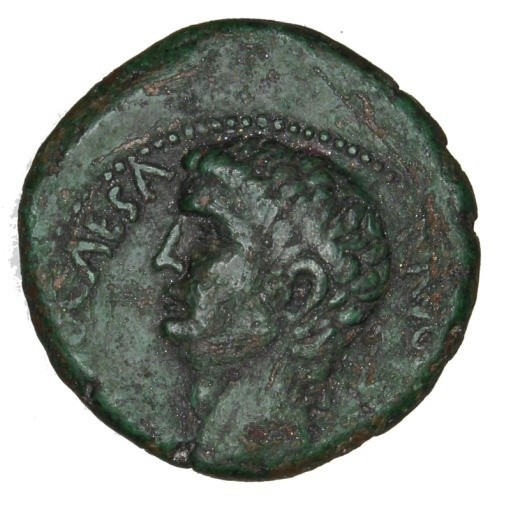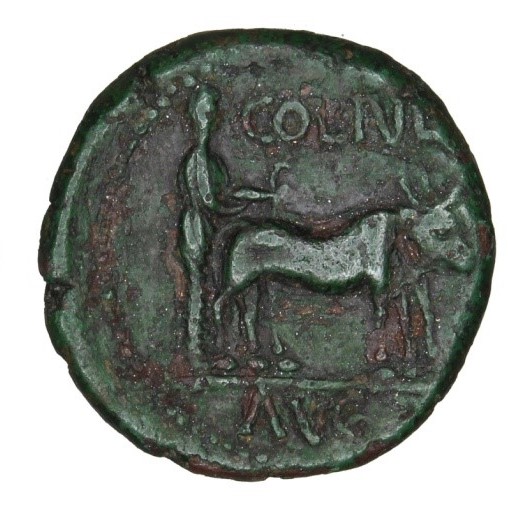Title: Provincial bronze coin (Æ 24) of Claudius - 2017.04
Acquisition number: 2017.04
Author or editor: Hugh Preston
Culture or period: Roman Imperial
Date: AD 41-54
Material: Metal - Bronze
Object type: Coins - Roman
Dimensions: 24mm (w)
Origin region or location: Lebanon
Origin city: Berytus
Display case or on loan: 5
Keywords: Coin, Roman, Imperial, Claudius, Berytus (modern Beirut), Roman Syria, Roman Phoenicia
Sear, D.R., Greek Imperial Coins (Seaby Publication, 1982, repr. 1991) 477; Burnett, A., Roman Provincial Coinage (London, British Museum Press, 1992) 4546.
2017.04
Provincial bronze coin (Æ 24) of Claudius
12.7 g. AD 41-54. Berytus (Beirut)
From the collection of Professor Emerita Beryl Rawson
Obv.: Bare head, l., [TI CLAVD] CAESA[R] AVG [GERM].
Rev.: Colonist ploughing r., with yoke of oxen, COL IVL AVG.
The ploughing scene symbolises the tracing of a furrow around the city to establish its boundaries. The Colonia Julia Augusta Felix was founded for veterans of the 5th and 8th legions around 14 BC (the exact date is uncertain). Coins of the colony were first struck under Augustus.
Sear, D.R., Greek Imperial Coins (Seaby Publication, 1982, repr. 1991) 477; Burnett, A., Roman Provincial Coinage (London, British Museum Press, 1992) 4546.

